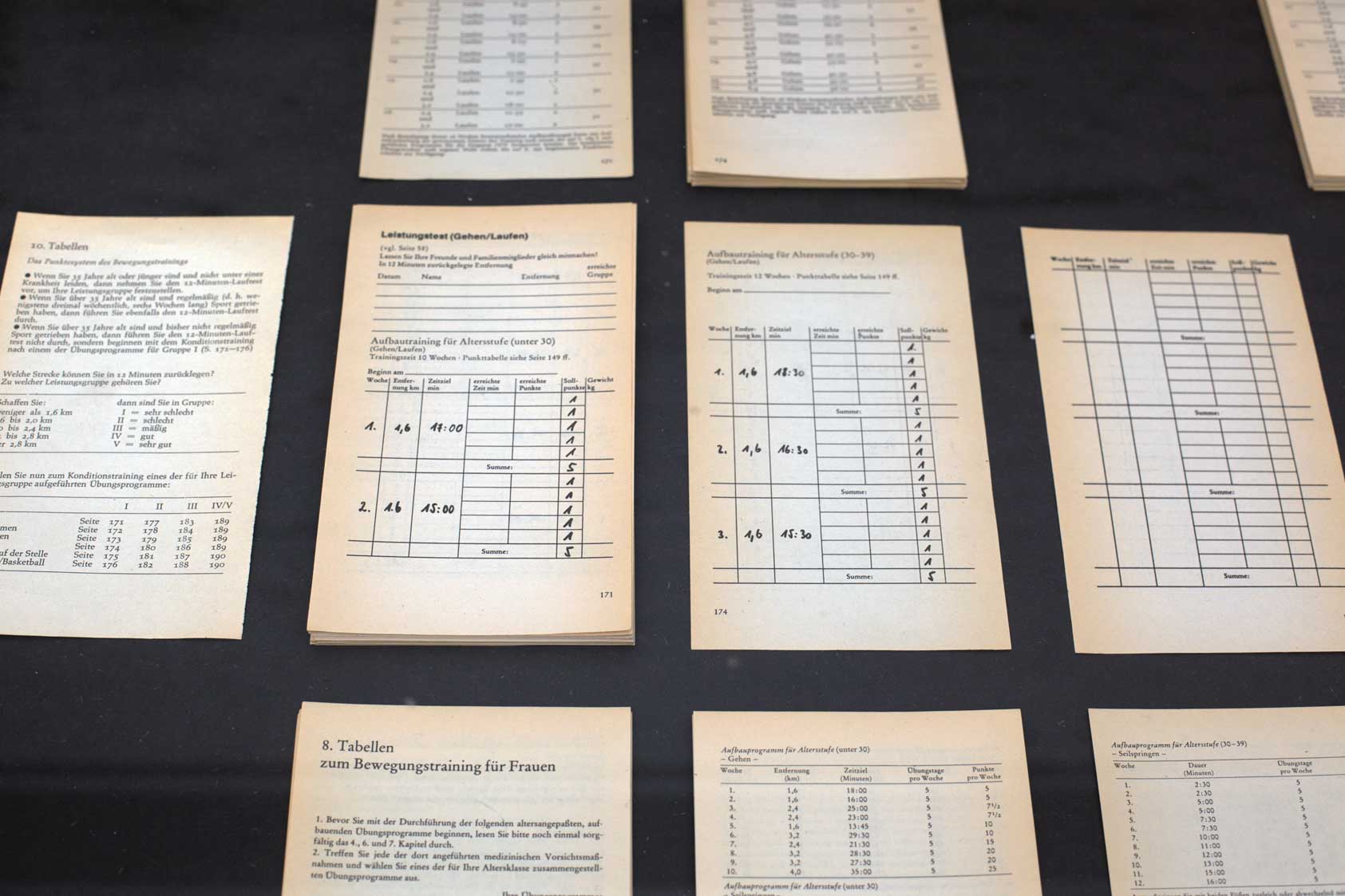The Cooper-Test Series 1-8
2013, 4-channel video installation, Full HD, 2 x 16 min. Loop, 2 display cabinets, book pages and archive material

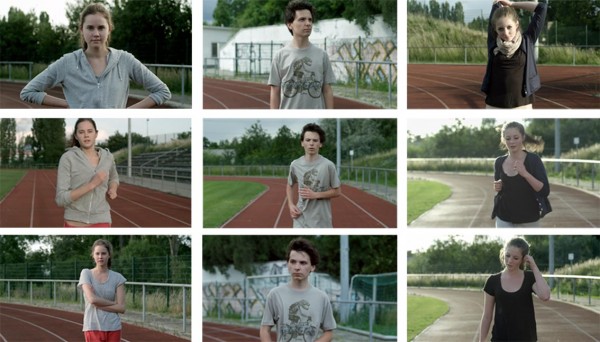
The installation deals with the socio-cultural shaping and disciplining of bodies by the incentive exercise of power within body dispositifs. It consists of four video projections and two cabinets placed in the middle of the room. Eight different sequences are screened consecutively. They show a continuous close-up shot of teenagers between the ages of 15 and 19 passing a physical fitness test, the so-called Cooper test. The cabinets show documents and tables for the evaluation of the test developed by Kenneth H. Cooper, as well as tables for the quantification of fitness, which are based on the test.
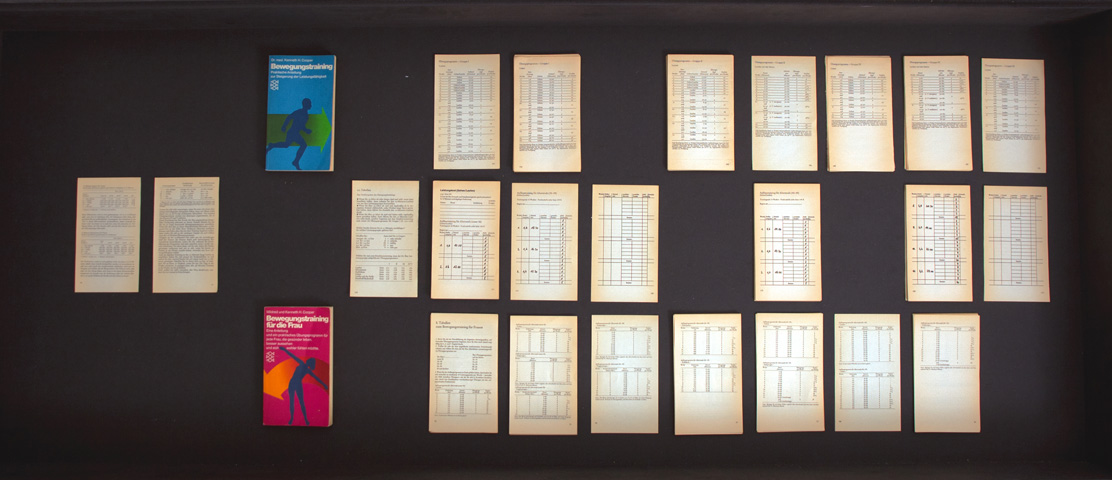

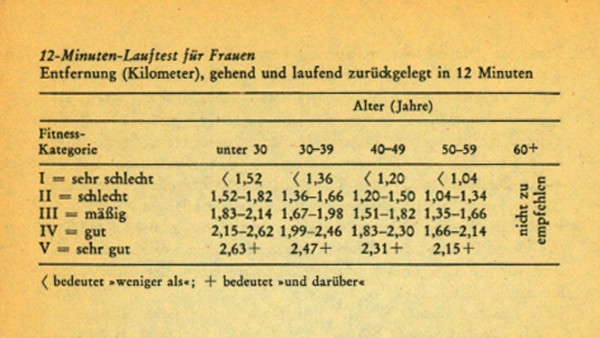
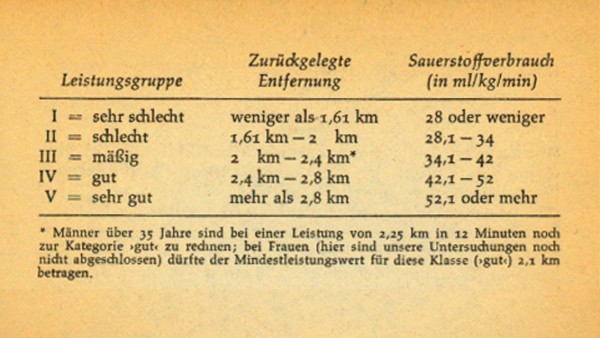
The Cooper test was designed by the American doctor of medicine and air force colonel Kenneth H. Cooper in 1968 for the use of the US military. It is an internationally practiced standard test to validate the physical fitness and general stamina of large populations. The test consists of a 12 minute run, in which the distance covered by the runner is measured within the given time. For women under the age of 30, a distance of more than 2630 meters is considered “very good”, more than 2150 meters is “good”, more than 1830 meters is “average”, more than 1520 meters is “bad” and everything below is “very bad”. For men of the same age, a distance of more than 2800 meters is considered “very good”, more than 2500 meters is “good”, more than 2200 is “average”, more than 1800 meters is “bad” and everything below is “very bad”.
Although in contemporary sports science and medicine the test is perceived as highly controversial or even completely pointless, it is still considered an international standard due to its practicability and cost-benefit efficiency. In the German-speaking world, it is practiced in the German and Austrian armed forces, as well as the federal police of Germany. In German states like Rhineland-Palatinate or Baden-Wuerttemberg, it is mandatory at the high school level and a component of the high school diploma. In Berlin, high school students from 10th grade on generally have to complete the test three times a year.


As an artistic research project, the installation does not investigate the evaluation of the body’s condition, but the question of conditioning. By transferring the action to the medium film, the evaluation does not occur through the criteria of time and distance, but is continuously performative, not through a “quantifiable” result, but through the empathetic gaze. As a mandatory test at schools, police and armed forces, the Cooper test represents a remarkable historic paradigm of the incentive exercise of power on the body – right at the crossover from a Foucauldian society of discipline to a society of social control in the sense of Deleuze. The runners’ behavior and performance, as well as the change of their physiognomies under the pressure and strain of the test, can only be called cultural inscription or conditioning to an extent. But within the context of a run that is still practiced in institutions embedded within the state or complex of disciplinary exercise of power, they can be negotiated as such.
